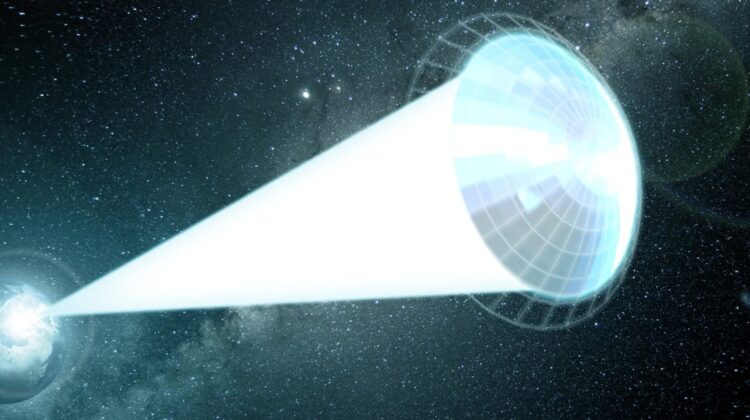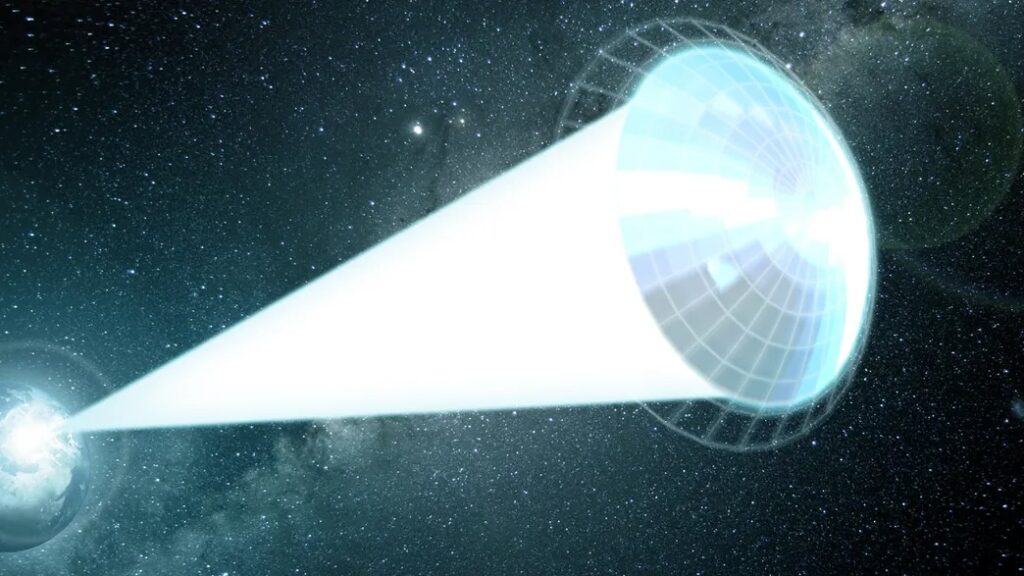
The ambitious quest to reach Alpha Centauri, the nearest star system to Earth, within a human lifetime has taken a significant step forward. For years, the Breakthrough Initiatives have pondered the possibility of making this monumental journey in a matter of decades, not millennia, thereby allowing the very scientists who initiate the mission to witness its outcomes. A recent study published in the Journal of the Optical Society of America B unveils a groundbreaking advancement that could surmount a critical obstacle, although additional challenges remain on the horizon.
The core challenge in interstellar travel lies in accelerating a spacecraft as it approaches the speed of light, especially when it carries its own fuel. The enormity of an object poses a formidable hurdle to acceleration. For perspective, even with today’s technology, it would take a human roughly 6,000 years to reach Alpha Centauri, a mere 4.37 light-years away.

Dr. Chathura Bandutunga from the Australian National University asserts that innovative solutions are imperative. One such proposal involves deploying lightweight spacecraft that receive an initial powerful push and then journey independently. This concept draws inspiration from the Breakthrough Starshot initiative, which envisions utilizing lasers to provide the initial acceleration.
While the idea of laser propulsion has been circulating for decades, its feasibility has gained traction through this new research. Atmospheric interference has been a primary concern, potentially hampering laser propulsion. However, the study’s authors propose a novel adaptation of adaptive optics technology, which compensates for atmospheric distortion. By utilizing a satellite-mounted laser to measure real-time atmospheric effects, ground-based lasers can adjust their focus, maintaining the required force on the spacecraft.

The magnitude of power required for this endeavor is staggering. The envisioned lasers would transmit at around 100GW, an astronomical figure by today’s standards. Yet, Bandutunga and Dr. Paul Sibley, co-authors of the study, remain undeterred. They suggest a clever energy storage solution, where energy is accumulated over days and rapidly released. This immense power would converge on a spacecraft measuring no more than 10 meters across, propelling it at about 20 percent of the speed of light.
Although formidable challenges persist, including preventing the craft from melting due to the intense energy, this concept opens the door to interstellar travel. Within an estimated 22 years, the craft could reach Alpha Centauri, heralding an era of humanity’s exploration of neighboring star systems. The mission’s significance extends beyond the individual probe; the potential to deploy a fleet of probes to explore nearby systems holds promise in expanding our understanding of the cosmos.

As scientific ingenuity advances and challenges are surmounted, the dream of reaching out to the stars inches ever closer to reality.

Leave a Reply